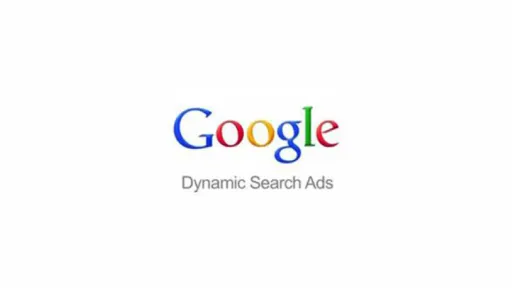With more and more touchpoints, people's customer journey is becoming increasingly complex. Delivering the right message at the right time is more important than ever to successfully conduct (online) marketing. With Google Ads, you can target the exact audience you want to reach. To provide the right ad text at the right time, numerous ad texts and campaigns are often needed. Lastly, those ads also need to be maintained when, for example, there is temporarily no stock. Google recently offers an automated solution for this: Dynamic Search Ads (DSA). This article explains what it is, how it works, and when you can best use DSA.
Also download our new whitepaper on SEA:
Download whitepaper
Dynamic Search Ads (DSA) in Google Ads work as follows:
The ad title and landing page are dynamically created by Google Ads based on the content of your website. For this process, Google Ads does not need a feed (as with Google Shopping) but uses information gathered during the crawling of your website. For the consumer, the ad looks like any other ad, only it is dynamically generated based on your website content.

Who are Dynamic Search Ads useful for?
“Is this the holy grail and do I no longer have to fill in anything myself?” You won't be the only one with this thought crossing your mind. DSA is a tool to use alongside the regular search network campaigns that are already running and not as a replacement for search network campaigns. To give an idea of who DSA is suitable for, below is a checklist to see if you can benefit from setting up DSA campaigns.
Do you recognize any of these points? You have:
- Extensive content on the website on many different pages. Think of travel agency websites.
- A wide range of different products and services. An example of this is an e-commerce website with custom articles and services.
- A range that may be temporarily unavailable due to stock. Especially useful for large retailers like Bol.com.
- Working on expanding into new markets. For example: Expanding into new countries like Belgium.
- Where your offerings are regularly updated? Webshops with, among others, shoes, due to the introduction of new collections.
- With seasonal items? Think of clothing webshops.
Does your website meet any of the mentioned characteristics? Then you should definitely set up a DSA campaign.
Who are DSA campaigns less suitable for?
DSA campaigns are not equally suitable for every website. Do you recognize any of the following points? Then think carefully about whether you want to use DSA.
You have daily deals that are only valid for a short time
Because Google may not index your website every day, the system does not include every daily deal. As a result, you miss out on traffic and revenue.
You currently have no other campaigns set up
Start with a campaign focused on your brand name. Then set up campaigns for the most important products/services. Optimizations can already be implemented in these, and you have more control over performance.
Little content on the website
If you literally have a campaign running for every page and not many content pages, then DSA will unfortunately add little.
What are the advantages and disadvantages of Dynamic Search Ads?
As briefly mentioned at the beginning, DSA campaigns can save you a lot of time. But what are the concrete advantages of dynamic search ads, and what are the differences compared to regular text ads?
Advantages of DSA:
DSA campaigns are quickly set up
Within a few clicks, you have set up a DSA campaign. Because you do not have to enter keywords, among other things, it saves time.
Combination with RLSA
DSA campaigns can also be combined with RLSA lists. How this works exactly and how to get the most out of this combination will be further explained later in this article.
Capture unknown popular search terms
Despite thorough keyword research, there may be topics you are unaware of that are popular search terms among your audience. With DSA, you can still capture the search volume on these words. Are there extremely popular search terms among them, or is the conversion rate higher than average? Then create a separate campaign for these search terms to better target the audience.
DSA leaves the already set search terms alone
When creating DSA ads, Google Ads always gives priority to regular search campaigns (when one of the exact keywords is in the regular search campaigns). Therefore, you do not have to worry about duplicate search terms and ads.
All extensions are included by Google Ads
No new extensions need to be created. The existing extensions can also be used by the DSA campaigns.
Exclude parts of the website from the ads
If you prefer certain parts of the website not to be included in the DSA campaign, you can easily exclude these pages. This way, you maintain control over the pages that may be used by the DSA campaign.
Negative keywords are still possible
Just like with regular campaigns, negative keywords can be added to prevent ads from being shown for those terms.
Disadvantages of DSA:
Less control than regular campaigns
You can make adjustments, but the full control like with regular campaigns is unfortunately not available for DSA campaigns. Bids and segmentation are possible, but exact and modified broad keywords are not applicable here.
Heavy user
If you are not careful and clearly indicate which parts of the website you want to include in the DSA campaign, it can suddenly go very fast with the money. So pay close attention to the daily budget and which terms/pages need to be excluded in the DSA campaign.
SEO and DSA go hand in hand
Your website can benefit from DSA if the SEO of the website is also in order. It is therefore necessary that the URLs, title tags, and content match what you want to convey on those pages. Prevent Google Ads from showing ads with the DSA campaign that you have nothing to do with.
Constant monitoring
We do not want to say that only DSA campaigns need to be monitored, but dynamic search ads are less strictly defined. They seize opportunities when they arise, with keywords you may not have thought of yet. Keep a close eye on the DSA campaigns to prevent the budget from being spent on the wrong terms.
Difference between regular ads and dynamic search ads:
- DSAs are automatically created by Google Ads based on the content of your website.
- Ad headlines are dynamically created based on the search query and the page title.
- You can set ads not to be shown if certain words or phrases appear on the page, such as temporarily out of stock or sold out.
- Google regularly crawls your website for SEO purposes. This information is also the source for creating DSA ads. When Google's spider comes by again, the most recent information is crawled. This also ensures that the ads dynamically created by Google Ads are kept up-to-date.
- DSA ad titles are not bound by the 25-character limit. This makes the ad title longer, more visible, and even more relevant. DSA ad titles can exceed 50 characters!

Getting started with DSA
Okay, time to roll up your sleeves and really put DSA to work. But what is the best way to set up this campaign and maintain control over spending?
Set daily and monthly budget
First, you can, as with any other campaign, set a budget per month and per day.
Structure
To keep a grip on performance and spending, set up a structure within which it is possible to adjust ad texts and bidding strategy per category. The first step is to use the categories recommended by the DSA campaign. Create a separate ad group for each category. This way, you can make the ads more relevant and improve the CTR.
Dynamic ad targets
Set dynamic ad targets per ad group. This can be based on category, URL, 'page title' & 'page content'. This way, you specify per ad group which web pages may be used for displaying ads.
Exclusions
There are some pages you prefer not to be included in the DSA campaign. These can be the homepage, top-level pages, blog, help pages, or privacy policy pages.
Additionally, articles or services that are no longer available can also be excluded. Exclude the text that becomes visible on the website when the article is no longer available.
Ad(s)
You may not be able to choose the headline of the ad, but you can fill in the ad text to your liking. Use this, just like with regular ad groups, and test multiple ads. A/B testing remains the key to well-performing campaigns in DSA campaigns.
Continuous evaluation
Once the campaign is set up and running, optimization begins. By continuously monitoring the campaign, popular keywords and landing pages can surface. When there is enough data to make an assumption about the performance of keywords, a separate ad group or even campaign can be set up for this.
Additionally, the DSA itself can also be optimized by monitoring the CPCs, ads, keywords, categories, and daily budget.
RDSA: Combine DSA with RLSA
Retargeting Lists for Search Ads are ideal for targeting the audience that is already familiar with your website more specifically. When you apply RLSA to a DSA campaign, a new combination arises: RDSA.
A brief explanation of what RLSA exactly entails.
- With RLSA, you can specifically target audiences that have already visited your website. If it turns out that, for example, people who visited the website up to 3 days ago convert better, you can increase the bid for this audience. On the other hand, for audiences that convert less well, the bid can be lowered to keep the CPO under control.
An advantage of combining DSA with RLSA is that the targeting of the DSA campaign can be broader (e.g., all web pages). You are targeting the campaign only at the audience that is already familiar with your website.
Additionally, you can better tailor the ad texts to the (customer journey) phase in which this audience is located.
Conclusion: untapped opportunities
DSA campaigns can be unclear for some people about where the money went and how to further optimize this. Hopefully, after reading this article, you have more insight into the many advantages and possibilities.
You now have the knowledge at your disposal to discover and better utilize untapped landing pages and keywords. Additionally, benefit from advantages such as automatically pausing a campaign when there is temporarily no stock, the longer ad titles, segmentation into categories, and of course, the RLSA lists.
Which popular pages or keywords have you overlooked?




